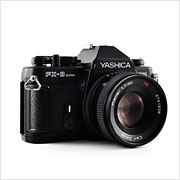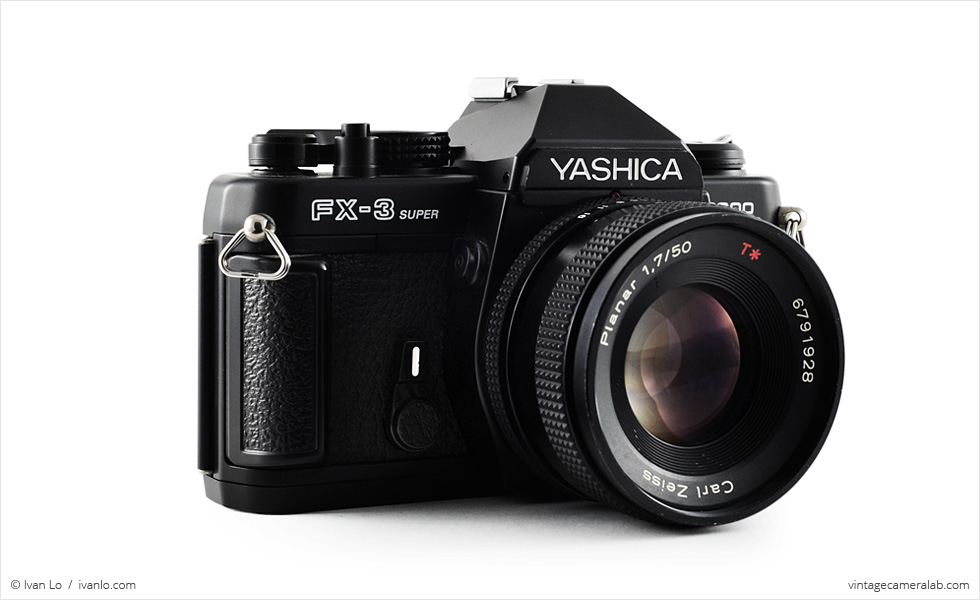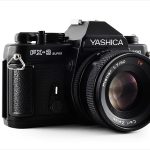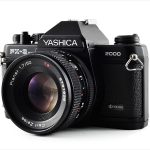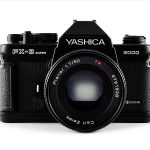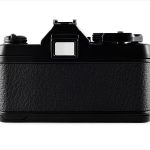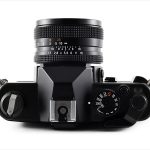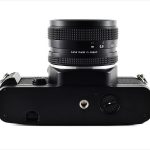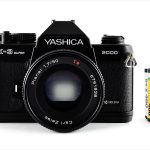Yashica FX-3 Super 2000 Specifications
| Manufacturer: | Kyocera Corporation for |
| Yashica Company, Ltd | |
| Origin: | Japan |
| Made in: | Japan |
| Introduced: | 1986 |
| Type: | Single Lens Reflex |
| Lens Mount: | Contax / Yashica Mount |
| Format: | 135 Film |
| Dimensions: | 13.8 x 8.7 x 5 cm (body only) |
| 13.8 x 8.7 x 9 cm (with lens) |
Yashica FX-3 Super 2000 Overview
The Yashica FX-3 Super 2000 is a variant of the very popular Yashica FX-3 which was introduced in 1979. With its mostly plastic body weighing in at only one pound, many photographers favored the FX-3 for its lightweight, compact design coupled with its ability to mount a wide range of exceptional optics including a superb lineup of legendary Carl Zeiss T* lenses.
For the most part, the FX-3 Super 2000 is fairly typical for an SLR of the time. Overall, the camera is very well designed, with an uncluttered front plate featuring only the lens mount, self-timer, and grip. The rest of the controls and features can be found on the top plate with a film rewind knob on the user’s left hand side, hot shoe in the middle above the viewfinder, shutter speed, and film speed selector directly to the right of it, shutter button with threaded remote cable socket, and finally the film advance lever. Compared to the base FX-3, the Super 2000 features a pronounced grip, a cadmium sulfide exposure meter that is activated by pressing the shutter button halfway and, as the name suggests, a maximum shutter speed of 1/2000.
As good as the Yashica FX-3 Super 2000 is, I bought this camera solely for the amazing Carl Zeiss Planar that it was sold with. During my routine scouring of online classifieds one day, I came across a local listing for an old camera and two lenses. It seems that, nine times out of ten, ads like this are written by disillusioned individuals who honestly believe they can get $250 for their dinged up Canon AE-1, a standard 50mm, and a dreary mid-range zoom made by some no-name company so I did the usual “take a quick glance and move on with my life” thing. The description was very vague, stating only that it was a Yashica FX-3 with two lenses and that they wanted $40 for it so I flipped through the photos. Slightly blurry picture of camera body: check. Worthless old zoom lens with hard case: check. Carl Zeiss Planar T* 50mm f/1.7 …huh? I called them right away, met with them the next afternoon and got my hands on an exceptionally sharp lens which I now use on my mirrorless camera.
Find your very own Yashica FX-3 Super 2000 on eBay.
McKeown, James M. and Joan C. McKeown’s Price Guide to Antique and Classic Cameras, 2001-2002. (Grantsburg, WI, USA: Centennial Photo Service, 2001), p 705.
